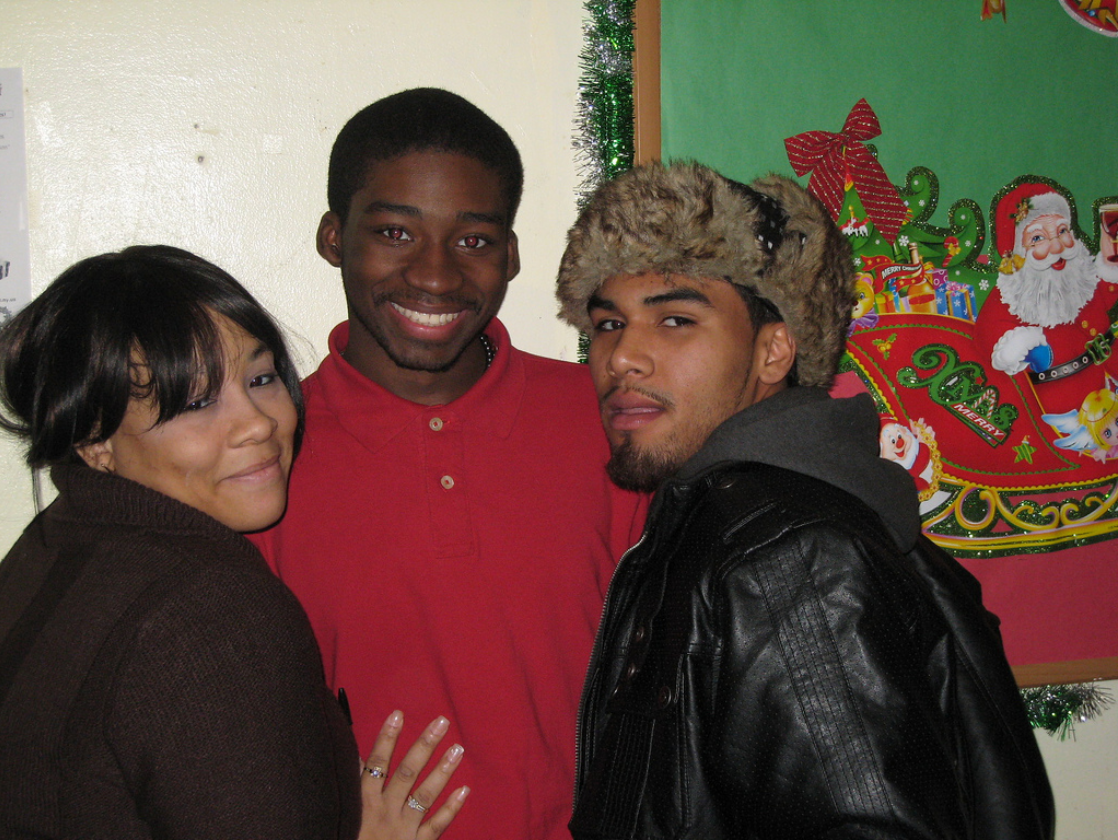LGBT foster kids struggle for support
PRODUCED BY SHEA CONNELLY
LGBT FOSTER KIDS STRUGGLE FOR SUPPORT
[Click here to learn more]
Campbell Amy Brown spent 18 years of her life being shuffled between foster homes and group homes. By the time she aged out of foster care, she had been through over 40 placements. But even beyond the pain of not finding a permanent home, Brown also had to endure bullying regarding her sexuality.
VIDEO STORY
 Related Content
Related Content
[Watch Now]
“If I sat down on the couch, other girls would get up,” said Brown, now in her mid-twenties. “If another girl and I were talking and having a good time, she would be asked if she was a lesbian, too. I had no escape from it and I truly feared one of the girls actually would smother me at night if I looked at them the wrong way.”
![]() Brown’s experiences are not unique. For years LGBTQ kids in the foster care system faced rampant bullying by other foster children and even adults working in the system. Brown reported being required by one group home to sign a contract saying she wouldn’t date anyone of the same gender, even though she had yet to self-identify as a lesbian. In the decade or so since, however, the LGBTQ community has been fighting back—encouraging regular training for social workers, pushing for legislation to establish non-discrimination laws, working with families to encourage acceptance, and dealing with state foster care systems that are slow to change.
Brown’s experiences are not unique. For years LGBTQ kids in the foster care system faced rampant bullying by other foster children and even adults working in the system. Brown reported being required by one group home to sign a contract saying she wouldn’t date anyone of the same gender, even though she had yet to self-identify as a lesbian. In the decade or so since, however, the LGBTQ community has been fighting back—encouraging regular training for social workers, pushing for legislation to establish non-discrimination laws, working with families to encourage acceptance, and dealing with state foster care systems that are slow to change.
The Foster Care Non-Discrimination Act also mandates training for all group home administrators, foster parents, and department licensing personnel in terms of supporting LGBTQ kids and teens. This law is intended to eliminate experiences like the abuse and harassment Brown faced.
Increased training to prevent abuse is one of the key steps LGBTQ organizations across the country are pushing foster care systems to take.
“I would guess pretty certainly that I probably could not find an LGBTQ client of mine in the last ten years who would say they hadn’t been discriminated against by more than one staff person,” said Kristin Kimmel, co-director of the LGBTQ Project at New York City’s Lawyers for Children.
Though a number of states, including New York, have issued non-discrimination policies, often these policies don’t require any LGBT-specific training.
“At trainings you’re preaching to the choir—the people who are least likely to balance personal with professional values are least likely to [voluntarily] come to training,” said Robin McHaelen, director of True Colors in Connecticut, a nonprofit that works toward meeting the needs of LGBTQ adolescents
New York City’s Administration for Children’s Services (ACS) has recently taken a few steps toward increasing training by partnering with the city’s LGBT Community Center to improve services for LGBTQ adolescents in foster care and reach out to LGBTQ-friendly foster and adoptive parents.
Tracey Little, the Center’s Project Foster Care coordinator, said the organization, in conjunction with ACS, developed ten benchmarks New York City foster care agencies must accomplish in order to receive “recognition as an agency committed to LGBT cultural competency.”
Among these benchmarks are ensuring all agency staff receive training. In that way, the project represents some forward movement by ACS. Many of the city’s LGBTQ advocates, however, do not believe ACS is doing enough. Participation in this project is optional and only those agencies that choose to take part are required by ACS to hold LGBTQ-specific trainings.
“I don’t think they’re incapable,” Kristin Kimmel of Lawyers for Children said, “but in all the years I’ve been doing this there’s been really no movement by ACS at all.” The non-discrimination policy is “progress,” she added, but ACS has yet to put it into action.
“There’s this policy that they’re very proud of and they’re happy to publish and send around but it’s just a policy—it doesn’t really create a mechanism for enforcement,” she explained. “If youth in foster care or a parent is discriminated against, what do you do with that, how does it get remedied? It’s just words on a piece of paper, it doesn’t change anything.”
In the meantime, LGBTQ activists have developed group homes, like Gramercy Residence in New York City, to shelter at-risk LGBTQ foster children. Gramercy is run by Green Chimneys Children’s Services and is a twenty-five bed home for LGBTQ-identified teens ages 16-20.
Homes like Gramercy Residence are a good temporary safe house for teens who have faced discrimination but Rob Woronoff, director of the Putting Pride into Practice Project at California’s Family Builders, said group homes should not be considered a perfect solution. Instead, they should provide support until the state trains all social workers and expands outreach to parents who want to adopt LGBT youth.
Campbell Amy Brown, who blogs about her experiences in California’s foster care system, echoed Woronoff’s opinion.
“I don’t think I would have wanted to live in a gay group home as a teen—I just wanted a normal foster home,” she said. “I don’t want my sexuality to matter that much. As a child I craved normalcy, I craved boring, I craved average. I wanted a normal, boring, supportive life.”
